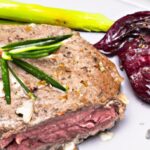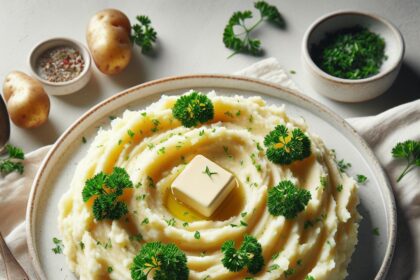There’s nothing quite as disappointing as the sharp, acrid smell of burnt soup wafting from the pot-hours of simmering seemingly ruined in a single moment. Yet all is not lost. Beneath that smoky veil, magic still simmers, waiting for a second chance. Rescuing burnt soup is an art, blending quick thinking with a few clever kitchen tricks to reclaim its vibrant flavors. In this article, we’ll dive into simple yet effective methods to salvage your soup, turning potential disaster into a delicious triumph. Get ready to transform charred regrets into spoonfuls of savory goodness!
Identifying the Perfect Moment to Rescue Your Soup
Rescuing burnt soup requires a keen sense of timing and sensory judgment. The critical moment arrives when you catch a faint smoky aroma-not overpowering but lingering-signaling the beginning of a burnt flavor seeping into your broth. Acting swiftly here can transform the soup from ruined to remarkable. Sniff carefully and skim the surface; burnt taste is often concentrated near the bottom and edges. Removing the scorched bits and transferring the soup to a clean pot helps isolate the unwanted flavors early, giving you headway to revive the dish.
Innovative Ingredients That Mask Burnt Flavors
To conceal subtle burnt undertones, turn to natural flavor enhancers that complement and balance the profile without overpowering it. Adding a splash of apple cider vinegar or a squeeze of fresh lemon juice can brighten the soup’s complexity, cutting through the bitterness. Incorporate raw grated potato or a peeled carrot chunk simmered briefly; these absorb smoky impurities effectively. A spoonful of honey or maple syrup introduces gentle sweetness, which harmonizes burnt notes and revitalizes the broth’s warmth.
Techniques to Restore Texture and Freshness
Texture restoration plays a vital role in the soup’s overall appeal. After removing burnt residues, add a splash of cold broth or water to thin any overly thickened or scorched base. For fresher mouthfeel, incorporate freshly sautéed vegetables-like diced celery or bell peppers-that add crunch and vibrant color. Puréeing part of the soup with a blender or immersion blender can smooth out any gritty burned granules and create a luscious consistency. Finally, swirl in a dollop of unsweetened yogurt or coconut cream for creaminess and a bright contrast against the smoky background.
Flavor Boosters to Revive and Enhance Your Dish
The final flourish is all about boosting and layering flavors to disguise any lingering burnt taste while evoking delicious depth. Add freshly chopped herbs such as cilantro, parsley, or chives right before serving to infuse herbal freshness. A dash of smoked paprika cleverly amplifies smokiness, now intentional and inviting. Enhance savory richness with a teaspoon of soy sauce or umami paste. For complexity, stir in a touch of toasted nuts or seeds, which add an unexpected but welcome crunch. Together, these steps allow you to confidently reclaim a beautifully balanced soup worth serving.
Prep and Cook Time
- Prep Time: 10 minutes
- Cook Time: 15 minutes (including rescue steps)
Yield
- 4 servings
Difficulty Level
- Easy
Ingredients
- 1 large carrot, peeled and chopped
- 1 small potato, peeled and grated
- 2 tablespoons apple cider vinegar
- 1 teaspoon honey or maple syrup
- 1/4 cup fresh lemon juice
- 1 cup vegetable broth or water
- 1/2 cup diced celery
- 1/2 cup diced bell pepper (any color)
- 2 tablespoons unsweetened yogurt or coconut cream
- Fresh chopped parsley, cilantro, or chives, to taste
- 1 teaspoon smoked paprika
- 1 teaspoon soy sauce
- Optional: 2 tablespoons toasted nuts or seeds (pumpkin or sunflower)
Instructions
- Carefully transfer the burnt soup from the scorched pot to a clean saucepan, leaving behind any burnt bits clinging to the bottom.
- Add chopped carrot and grated potato to the soup, then simmer gently for 10 minutes. These vegetables absorb off-flavors and soften the broth.
- Remove the carrot and potato pieces using a slotted spoon to avoid grittiness in the final dish.
- Stir in apple cider vinegar, honey, and lemon juice to brighten and balance the flavor profile.
- Add fresh diced celery and bell pepper, sautéed lightly in a separate pan until crisp-tender, then fold in to restore crunch and freshness.
- Blend half the soup using an immersion blender or regular blender until smooth, then return to the pot and stir thoroughly to improve texture.
- Swirl in yogurt or coconut cream for a creamy finish, stirring gently to combine.
- Season with smoked paprika and soy sauce to boost smoky depth and umami complexity.
- Garnish with freshly chopped herbs and toasted nuts or seeds for aroma and texture before serving.
Tips for Success
- Work quickly: The sooner you catch and address burnt soup, the more likely it will be salvageable.
- Use neutral-flavored broth: When diluting, pick a broth that won’t clash with your soup’s base flavor.
- Adjust sweetness and acidity: Taste and tweak honey and lemon quantities depending on the intensity of burnt notes.
- Consider adding fresh veggies: These add life and vibrancy that counteract dull burnt effects.
- Store leftovers correctly: Refrigerate promptly and consume within 2 days to maintain freshness.
Serving Suggestions
Present your revitalized soup steaming hot in rustic bowls. Garnish with a sprinkle of fresh herbs and a drizzle of high-quality olive oil or flavored oil to add gloss and aroma. Serve alongside crusty artisan bread or garlic crostini for dipping. Consider pairing with a crisp white wine or light herbal tea to complement your perfectly rescued creation. This hearty yet refined presentation will turn your rescuing burnt soup efforts into a kitchen triumph worth sharing.
| Nutrition per Serving | Amount |
|---|---|
| Calories | 140 |
| Protein | 4g |
| Carbohydrates | 18g |
| Fat | 5g |
Discover more warming soup recipes to expand your kitchen confidence. For science-backed tips on flavor masking, visit Serious Eats Food Science.

Q&A
Q&A: Rescuing Burnt Soup – Simple Tricks to Save the Flavor
Q1: My soup tastes burnt-can it really be saved, or is it a lost cause?
A: Fear not, burnt soup isn’t automatically doomed! With a few clever tricks, you can often rescue the flavor and salvage your creation. The key is to remove the burnt parts quickly and then freshen the soup to mask any bitter undertones.
Q2: What’s the first step when I realize my soup has a burnt smell?
A: Stop cooking immediately and don’t stir the pot! Stirring can mix the burnt bits throughout the soup, making the flavor worse. Carefully transfer the unburnt soup to a new pot, leaving the scorched layer behind.
Q3: How can I neutralize the burnt taste after transferring the soup?
A: Adding acidity is a powerful way to brighten flavors and balance bitterness. Try stirring in a splash of lemon juice, apple cider vinegar, or even a bit of tomato paste. Fresh herbs like parsley or cilantro can also help mask the burnt flavor.
Q4: Are there any other kitchen hacks to mask or fix a smoky, burnt flavor?
A: Yes! Adding a peeled potato to simmer in the soup can absorb some of the burnt flavor-just remove it after 15-20 minutes. A dash of sugar or a spoonful of honey can also counteract bitterness by adding subtle sweetness.
Q5: What if the soup is too thick or texture is off after rescue attempts?
A: Thin it out with some broth or water, then adjust seasoning. If flavor is still muted, boost it with a splash of soy sauce or Worcestershire sauce for depth, or add a bit of cream or coconut milk to smooth out harsh notes.
Q6: Can I prevent burnt soup from happening again?
A: Absolutely! Always cook soups on low to medium heat, stir occasionally, and use heavy-bottomed pots for even heat distribution. Setting a timer to check periodically can save your soup from an unfortunate “burnt” fate.
Q7: When is it better to just start fresh?
A: If the burnt flavor is overpowering despite all tricks or if the smell is acrid and strong, it’s best to toss the batch. Sometimes, a fresh start means a better bowl of soup-and less regret.
Remember, even if your soup looks like it’s seen a kitchen disaster, a few quick fixes can turn it from charred to charming. Happy cooking-and rescuing!
In Conclusion
In the culinary world, even the best of us face the scorch of burnt soup-a moment that feels like a kitchen catastrophe but need not end in waste. With these simple tricks in your flavor-saving toolkit, you can transform a charred mishap into a surprisingly delicious dish, proving that resilience in cooking is as vital as in life. So next time your soup takes a smoky turn, don’t despair-embrace the rescue, stir in a bit of creativity, and watch your burnt soup’s story shift from disaster to delight. Happy cooking!








